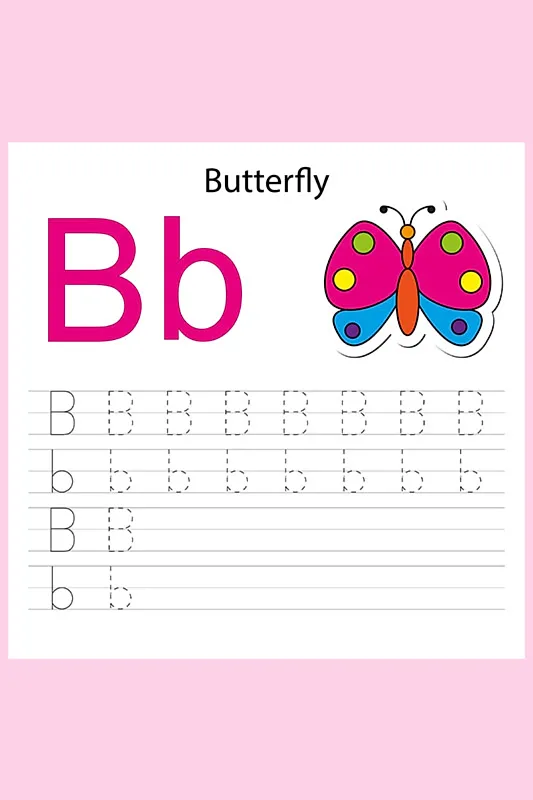How to Teach Kids to Write?
Kids start their learning journey the moment they are born. First, they learn to adapt to their new surroundings, then make their bodies accustomed to the intake of solid and liquid food items, and slowly progress to learning the nuances of life, such as crawling, walking, and identifying things and people around them. While kids learn many things on their own, certain things need to be taught to them. One such thing is writing. Teaching kids to write is an important step in their development, which helps them express their thoughts, improve communication skills, and boost creativity. Here, we will guide you through how to teach kids to write and make it enjoyable.
When Do Kids Learn to Write?

Your kid will take her first step towards writing by scribbling random things. Learning to write is not easy, and your child will need a good amount of time to understand what she is writing or drawing. A child usually starts to understand the difference between drawing and writing by age three (1).
Teaching how to write requires a lot of patience from the parents. Writing gets a boost once the kid starts talking and understanding all the letters’ sounds and meanings. There is no standard way to teach writing to preschoolers and toddlers, but the playschool will help the kids fine-tune their writing skills and teach them how it is different from drawing (3).
How to Teach a Child to Write?

A school has trained teachers who will teach the child how to draw and write once your kid begins schooling. However, even before your toddler starts formal schooling, you can give them a head start by teaching certain elementary basics about writing. Here are the different methods of how to teach a child to write letters:
1. Do Not Teach How to Write Just Because It’s Necessary, Make it Fun

No kid will start writing letters properly with a pencil or a crayon at once. They will start writing only when the colours and patterns amuse them. Start off by showing them how to make random signs using slate and chalk or magnetic doodle pads. Another exciting way to get a toddler interested in writing is to use sand, salt, or wheat flour to draw random signs and letters and encourage them to follow.
2. Strengthen Their Palms

Developing hand muscles is an important step in getting your child to write more. Playing with clay or playdough and holding different things with their hands will strengthen the hand muscles.
3. Ensure a Good Grip
Give your child a pencil or crayon that fits their palms comfortably and provides a good grip. This will make writing easy and ensure that their handwriting is good. Using golf pencils will help.
4. Allow Them to Scribble

Do not stop your kids from scribbling. Allow them to start scribbling as soon as they begin holding items. Seeing things appear on paper from their hands excites and encourages the child to scribble more. You can guide them on how to write their name, one letter at a time.
5. Show Enthusiasm and Excitement While They Write
Children tend to do things with greater enthusiasm when people around them are amused by what they do. Show excitement by laughing and clapping every time your child scribbles something. This will make them happy and encourage them to write more.
6. Make the Margin Lines More Visible and Evident

If your child has trouble writing letters between the margin lines, highlight and darken the lines to make them visible. Also, draw different multicoloured lines as start points for capital and small letters so the child knows where to begin and end a capital letter and a small letter.
7. Limit Their Interaction With Devices Such as Mobile Phones and Tablets

Digital tools are something that you should make sure your kid stays away from during the initial years. Getting hooked on mobile phones will make them lose interest in writing. Also, avoid teaching them how to write on a tablet. This will prevent them from developing proper grip and control with a pencil or pen. Although our lifestyle today is dominated by technology, and it is impossible to keep a child away from them completely, it is worthwhile to restrict their exposure to digital enhancements.
8. Make Your Child Write on Top of Letters Written by You

Tracing a letter will make it much easier for a child to learn the contours and curves of an alphabet. Write down a few alphabets and have your child write on top of them. Once they familiarise themselves with the letters and get a hang of them, have them write without the pre-written letters.
9. Give Them the Freedom to Write What They Like and Do Not Get Worried if They Write Backwards
Many children start writing backwards in the beginning. The best way to correct them is by getting a black slate with borders and marking the top left corner as the starting point. This will ensure that they write in the correct direction. Also, do not restrict them from writing what they want, as this will discourage and disinterest them from writing. Teach how to write the correct things slowly and step by step.
10. Teach Them How to Recognise Letters

Children will be able to write letters much more easily if they can identify, memorise, and relate to them. Surround your kid with alphabet shapes in the form of magnets, puzzles, and drawings. Spell out letters to them while pointing out the respective letter. This will help them associate the letter with its sound, thereby fulfilling an important prerequisite to learning how to write.
11. Create a Writing Routine
Keep a dedicated time each day for your child to focus on writing, even just a few minutes. This consistency helps them build confidence as they see their progress. Over time, this habit strengthens their writing skills and helps them develop discipline.
FAQs
1. What can I do if my child shows no interest in writing?
If your child is not interested in writing, incorporate games, storytelling, or colourful pencils and crayons to make the activity more fun. Praise their efforts, but never force them to write.
2. Is there a different process of teaching left-handed kids to write?
If your child is left-handed, help them find a comfortable writing position. You may need to provide additional guidance on pencil grip and paper positioning, but the process is similar to teaching right-handed children.
3. How can I support my child with dyslexia in learning to write?
Use multisensory methods that engage sight, sound, touch, and movement. Use lined paper and break down writing tasks into smaller and manageable steps (2).
Kids are enthusiastic about learning new things and cling to what they see, hear or do. Being patient is a prerequisite when trying to teach preschoolers to write. They will have a short attention span and get distracted very easily. Understand that teaching them will take effort and time. Also, applying the correct methods of teaching kids to write and continuously monitoring their progress is essential, as any unchecked mistake will become a habit in the long run.
Many different ideas and tools will help you understand how to teach a child to write the alphabet in easy and organised ways. You need not wait for formal schooling to start in order to teach your child how to write. These tips will help you get started even before school does.
References/Resources:
1. Belsky. G; Writing skills at different ages; Understood; https://www.understood.org/en/articles/writing-skills-what-to-expect-at-different-ages
2. Hebert. M, Kearns. D. M, Hayes. J. B, et al.; Why Children With Dyslexia Struggle With Writing and How to Help Them; PubMed Central; https://www.ncbi.nlm.nih.gov/pmc/articles/PMC6430506/
3. Bindman. S. W, Skibbe. L. E, Hindman. A. H, et al.; Parental Writing Support and Preschoolers’ Early Literacy, Language, and Fine Motor Skills; PubMed Central; https://www.ncbi.nlm.nih.gov/pmc/articles/PMC4183063/
Expository Writing for Children
Easy Metaphor Examples for Kids
Tips on How to Teach Kids to Read
How to Improve the Writing Speed of a Child
Was This Article Helpful?
Parenting is a huge responsibility, for you as a caregiver, but also for us as a parenting content platform. We understand that and take our responsibility of creating credible content seriously. FirstCry Parenting articles are written and published only after extensive research using factually sound references to deliver quality content that is accurate, validated by experts, and completely reliable. To understand how we go about creating content that is credible, read our editorial policy here.






















